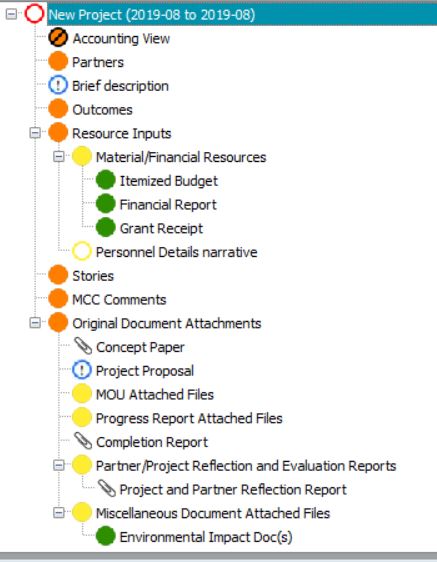PlanWin is designed to be configured to meet your specifications. Multiple techniques are used to accomplish this.
A hierarchical data structure is used to define the major elements of the organization’s structure and relationship of the data elements. What does this actually mean? A heirachical data structure is much like an outline where each outline point represents an organizational unit or a data element.

Above is a partial example from a functioning installation of PlanWin. Each element defines a position in the data structure as well as the kind of data element.
This structure is completely defined by you to meet your requirements.
In addition to defining the relationship of the content to each other, each element has many properties that define how it works in PlanWin. The most fundamental property defines what sort of data is associated with each element in the structure.
Currently the data is defined by a”form” which defines what data is collected and how it is shown on the screen. The current form types are:
- Program details
- Plan/Project details
- Personnel details
- Narrative text
- Partner details
- Material Resources details
- Country details
- Learning Tours and Exchanges
- Spreadsheet (simple)
- Attached files
- Fiscal year
- Person or Program Contact details
- Location details
- Accounting – link to accounting data in FASWin
- Metrics
So you see, by defining the structure and what each data element consists of, a dynamic and customizable data structure is available for your needs.